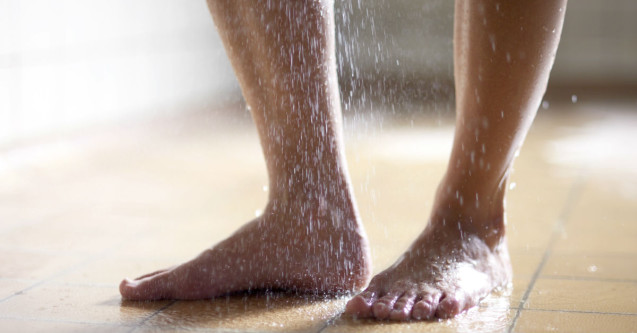10 tips to prevent plantar warts
Plantar warts are common in society. Everyone knows of at least one person in their immediate surroundings that has suffered from these lesions. The cause of plantar verruca is a common skin virus know as the human papilloma virus (HPV). This virus changes the structure of the skin. The skin becomes harder and more vascularized. Black dots form within the plantar wart. These black dots are small blood vessels that have ruptured. A plantar wart can be painful to the touch and painful when pressure is applied when walking. In order to prevent this from occurring on your feet, read on to these 10 tips to prevent plantar warts.
1) Avoid walking barefoot at all times
We find the virus causing warts on the surface of the ground. Commons sites of infection for this contagious virus are humid public areas. If there is a break in the skin by abrasion, by a blister or by a cut, the skin loses its natural protection. As a result, the skin is defenceless and it becomes easier for the virus to attack the skin’s surface.
2) Use sandals or flip-flops in humid public areas
Humid public areas like pool showers, gym showers, arena showers and even hotel showers create an environment that is favourable to the life span and growth of the virus associated with plantar warts. It is necessary to always avoid contact with the floor in these environments by wearing sandals or flip-flops. And yes, even in your hotel room!
3) Change socks and shoes daily
Humidity and heat are factors that promote the life and growth of the virus causing verruca. The virus can also survive on our clothing for a certain amount of time. As a result, our shoes and socks become a possible vehicle to transmit the virus. By changing our socks and shoes daily, our feet are less exposed to the favourable virus environment and our chances of becoming infected are diminished.
4) Keep your feet clean and dry
Feet that are unclean and frequently humid are at risk to having the structure of the skin altered. The result is a loss in the skin’s natural protective barrier. Without this protection, the skin can be attacked with ease by many organisms, including viruses and bacteria.
Normal hygiene of the feet prevents the destruction of the skin’s protective layer. Under these circumstances, the virus causing plantar warts will have less of a chance to invade the skin and form a lesion.
5) Regularly check your children’s feet
Plantar warts do not always cause pain. So it is possible to have warts and not even realize it!
It is important to verify your children’s feet especially those that are frequently around pools and those that enjoy barefoot sports such as gymnastics and karate. Plantar warts slowly grow in size and depth and will eventually cause pain. Furthermore, larger warts are more difficult to treat and eliminate.
6) Avoid all direct contact with the plantar warts of other people
Whenever we have some sort of skin change on the bottom of our feet, it is normal to inspect the region. However, plantar verruca are contagious.
It is imperative to never polish, rub, scratch and/or pierce the skin associated with warts. Unfortunately, it is common for patients to rub the infected area with a pumice stone since they suspect that the lesion is a corn or a callus. Plantar warts have a viral cause so it becomes necessary to avoid contact with the infected skin. If this is not the case, it is a certainty that the virus will spread to other areas.
7) Do not neglect a new skin growth or any skin change of your feet
Epidermal changes of the feet have multiple causes. One of the etiologies of these changes is the virus that causes plantar warts. It is imperative to consult your podiatrist for plantar verrucae to prevent pain and to limit multiplication of these lesions which are often difficult to treat.
Furthermore, other skin changes of the feet may have dangerous side-effects especially if self-treated. In particular, diabetic patients and those with vascular disorders have more difficulty with the healing process. These patients should consult a podiatrist without delay whenever skin changes of the foot occur.
8) Protect the skin from all injury
Feet are often subject to irritations. We can get blisters from a new pair of shoes. While walking barefoot in the garden, a splinter can pierce the skin.
As soon as the skin is open and without any sort of natural protection, the virus causing plantar warts will enter with ease. It is essential to protect skin that is irritated, inflamed or cut to limit exposure to all organisms, including viruses. The skin can simply be protected with a ‘bandaid’ or any waterproof tape.
9) If you have plantar warts, cover them in humid environments
Due to the ease of transmission of plantar warts, it is important to cover your plantar warts with a ‘bandaid’ or waterproof tape. This protection minimizes the diffusion of the virus to others.
10) Avoid quick treatments available at the pharmacy
Plantar warts can be disguised as many things! Warts resemble corns, callus and foreign bodies. Only your podiatrist can help you with the diagnosis, and so you should avoid home remedies that are inefficient, unnecessary and costly.
Furthermore, these home remedies available in pharmacies contain acids. It is quite easy to burn the healthy skin around the lesions. A second wound, often more painful than the wart itself, may be your reward!
If you know of someone who has suffered from plantar warts or if you are worried about being exposed to the associated virus, these 10 tips for plantar wart prevention will be a great help. Consult your podiatrist to keep your feet healthy and functional!


